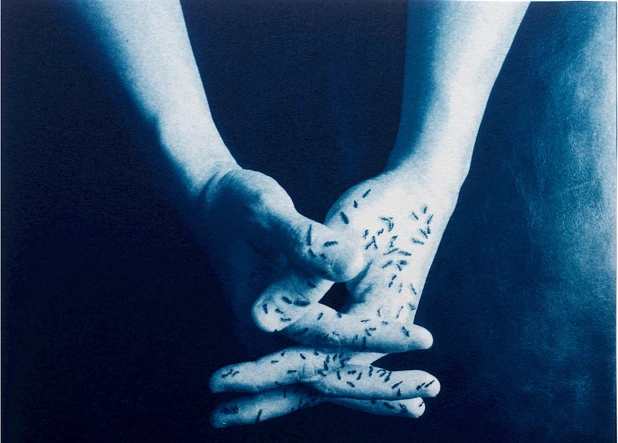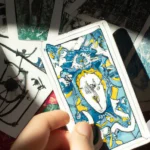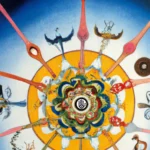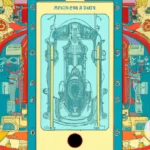Welcome to the fascinating world of dreams, where your subconscious mind weaves intricate tales while you sleep. Dreams hold great significance in unlocking the mysteries of our inner selves, and one of the key figures in exploring this realm is Carl Jung. Jung, a renowned psychoanalyst, developed a comprehensive system for understanding dream symbols that can provide profound insights into our waking lives. In this article, we will delve into the depths of Jungian dream analysis, exploring common dream symbols, uncovering the meaning behind lucid dreams, interpreting nightmares and anxiety dreams, exploring archetypes, and using Jungian techniques for dream analysis. So, grab your metaphorical magnifying glass and let’s embark on a journey to unlock the enigmatic symbolism of your dreams.
Understanding Carl Jung’s Dream Symbols
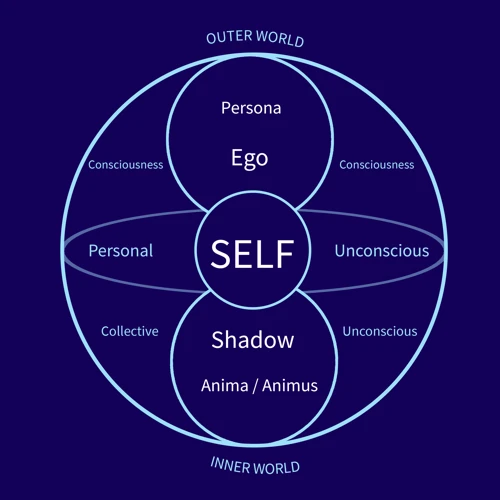
Understanding Carl Jung’s Dream Symbols can be a fascinating journey into the depths of our unconscious mind. Jung believed that dreams were not random, but rather meaningful expressions of our psyche. According to his theory, dreams use symbols to convey messages and insights about ourselves and our lives. These symbols are deeply personal, based on our own individual experiences and beliefs. To understand Jung’s dream symbols, it is important to approach them with an open and curious mind. One key aspect is to recognize that symbols can have multiple meanings depending on the individual’s unique context and associations. For example, dreaming of a jaguar may have different interpretations for different people, such as representing power, agility, or even the subconscious connection to the divine. It is also essential to explore the emotions and feelings evoked by the symbols, as they provide valuable clues to their significance. By delving deep into the rich world of Jungian dream symbols, we can unlock hidden truths about ourselves and gain profound insights into our waking lives.
Common Dreams and Their Interpretations

Dreams have long been a subject of curiosity and intrigue, as they provide a window into the subconscious mind. Understanding the interpretations of common dreams can help us unravel the hidden messages they hold. One common dream is the experience of flying. Flying dreams often symbolize a sense of freedom, liberation, or the ability to rise above challenges and obstacles. Another common dream involves teeth falling out, which can represent feelings of insecurity, vulnerability, or a fear of aging. Being chased in a dream is another recurring theme, typically indicating unresolved fears or anxieties in our waking lives. Dreams of nudity can reflect feelings of vulnerability, exposure, or a desire to be seen and accepted for who we truly are. Water dreams, such as swimming in a calm ocean or being caught in a stormy sea, may signify emotions, subconscious desires, or the ebb and flow of life’s experiences. Exploring the meanings behind these common dreams can provide valuable insights into our innermost thoughts and emotions. Remember, the interpretation of dreams is a highly personal process, and the context and emotions surrounding each dream can vary greatly. So, dive into the symbolic waters of your dreams and unlock their hidden meanings.
Flying Dreams
Flying dreams are a common and exhilarating experience that often leave us with a sense of freedom and liberation. In the realm of dream interpretation, flying is often associated with a sense of empowerment and transcendence. Flying can represent a desire to escape from limitations or challenges in our waking lives, and it can symbolize our ability to rise above difficulties and achieve personal growth. It can also indicate a need for a new perspective or a desire for greater control over our lives. However, it is important to consider the specific details and emotions associated with the flying dream to uncover its true meaning. For example, if the flying feels effortless and joyful, it may indicate a sense of confidence and mastery. On the other hand, if the flying feels difficult or out of control, it could point to underlying anxieties or a fear of failure or loss of control. Exploring the intricacies of flying dreams can provide valuable insights into our aspirations, fears, and the sense of freedom we seek in our waking lives.
Teeth Falling Out Dreams
Teeth falling out dreams are a common and often unsettling experience. In the realm of dream interpretation, these dreams can carry symbolic meaning. According to Jung, teeth are associated with power, confidence, and self-image. When they fall out in dreams, it may indicate a sense of vulnerability or loss of control in one’s waking life. The specific details of the dream, such as the condition of the teeth or the emotions felt during the dream, can provide further insights. For example, if the teeth are decaying, it could suggest feelings of decay or neglect in one’s personal life or relationships. On the other hand, if the teeth are healthy and strong, it may indicate a sense of personal strength and self-assurance. Exploring the emotions and personal associations with teeth falling out dreams can help uncover the underlying meaning and provide guidance for personal growth and self-reflection.
Being Chased Dreams
In Being Chased Dreams, the sensation of being pursued can be intense and unsettling. According to Carl Jung’s interpretation, this dream symbolizes avoidance or resistance towards something in our waking lives. The chaser represents the aspects of ourselves or situations that we are trying to escape or avoid. It could be a reflection of fears, anxieties, or unresolved issues that we are unwilling to confront. Understanding the context and emotions surrounding the chase is crucial in uncovering its true meaning. For example, if we feel terrified during the dream, it may indicate that we are avoiding facing our fears in reality. On the other hand, if we feel a sense of excitement or exhilaration, it could suggest a desire for change or a need to break free from limitations. Exploring the details and emotions of these dreams can provide valuable insights into areas of our lives where we may be running away from important matters or aspects of ourselves that need attention and resolution.
Nudity Dreams
Nudity dreams are a common phenomenon that can hold deep symbolic meaning. When we dream of being naked or exposed, it often represents vulnerability and a fear of being judged or inadequate. It can reflect feelings of insecurity or a sense of being emotionally exposed in our waking life. However, it’s important to note that the interpretation of nudity dreams can vary depending on the individual and their personal experiences. For some, nudity dreams may signify a desire for freedom and self-acceptance, while for others it may reflect a fear of embarrassment or shame. Exploring the emotions and context surrounding these dreams is crucial for a more accurate interpretation. It’s also important to consider any specific details or circumstances within the dream that may provide further insights. If you dream of being naked in jail, for example, it could symbolize a feeling of being trapped or confined emotionally. Each person’s experience with nudity dreams is unique, and it requires a thoughtful and introspective approach to unravel the underlying messages they contain.
Water Dreams
Water dreams hold a deep symbolic meaning in the realm of dream interpretation. According to Carl Jung, water is a potent symbol representing the unconscious mind, emotions, and the flow of life. When we dream of water, it can reflect our emotional state or signify the need for emotional healing and purification. In Jungian analysis, the characteristics of the water, such as its calmness or turbulence, clarity or murkiness, can offer insights into our psyche. For example, calm and clear water may represent tranquility and emotional stability, while choppy or murky water may indicate inner turmoil or unresolved emotions. Water dreams can also symbolize transition and change, as water is associated with the ebb and flow of life. Exploring the specific details of water dreams, such as swimming, drowning, or being surrounded by a vast ocean, can reveal deeper layers of meaning. So, dive into the depths of your water dreams and discover the hidden messages they hold for your waking life.
Uncovering Symbols in Lucid Dreams

Uncovering symbols in lucid dreams can provide a unique opportunity for self-discovery and exploration. Lucid dreaming occurs when we become aware that we are dreaming while still in the dream state. This heightened level of consciousness allows us to actively engage with the dream and its symbols, opening up a world of possibilities for understanding ourselves on a deeper level. In lucid dreams, we can intentionally interact with dream characters, objects, and environments, gaining valuable insights into their symbolic meaning. For example, if you find yourself in a dream jail, it may symbolize feelings of restriction or confinement in your waking life. Alternatively, dreaming of getting fired could reflect concerns about job security or a desire for change in your career. By exploring and unraveling the symbols in lucid dreams, we can tap into the vast reservoirs of wisdom contained within our unconscious minds and use it to guide our personal growth and development.
Interpreting Nightmares and Anxiety Dreams
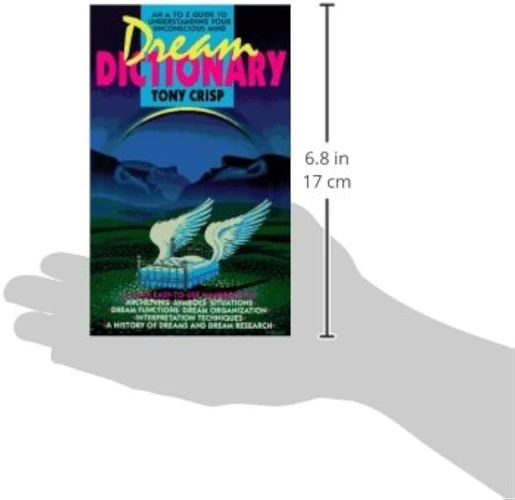
Interpreting nightmares and anxiety dreams is a crucial step in understanding the messages our subconscious is trying to communicate. Nightmares and anxiety dreams often evoke intense emotions and can leave us feeling unsettled upon waking. However, Jung believed that these dreams provide valuable insights and opportunities for personal growth. When analyzing these types of dreams, it is essential to pay attention to the symbols and themes present. For example, dreaming of being chased may symbolize a fear or feeling of being pursued by unresolved issues or emotions in our waking life. It could be an indication that we need to confront and address these issues in order to find inner peace. Similarly, dreams of falling may represent a lack of control or stability in our waking life. By exploring these symbols and the accompanying emotions, we can shed light on our anxieties and fears, allowing us to work through them and find resolution. It’s important to approach these dreams with self-compassion and a willingness to confront our inner struggles. Ultimately, by interpreting nightmares and anxiety dreams, we can gain valuable insights and take steps towards personal growth and healing.
Exploring Archetypes in Dreams

Archetypes play a significant role in the realm of dreams, offering profound insight into our deepest fears, desires, and aspirations. Carl Jung identified various archetypes that recur in dreams and hold universal meanings across cultures and individuals. One prominent archetype is the Shadow, representing the hidden, suppressed aspects of ourselves that we may struggle to acknowledge. These may include our fears, repressed desires, or unresolved conflicts. Another archetype is the Anima/Animus, embodying the feminine aspect within men and the masculine aspect within women. This archetype symbolizes the integration of our inner opposites and the quest for balance and wholeness. Additionally, the Wise Old Man/Woman archetype represents wisdom, guidance, and the collective knowledge of the ages. By exploring these archetypes within our dreams, we gain invaluable insights into our own psyches and can embark on a journey of self-discovery and
Subscribe to Our Newsletter
Sign up to receive the latest news and updates.
The Shadow Archetype
The Shadow Archetype, a concept developed by Carl Jung, represents the dark and unconscious aspects of our personality. It is the part of ourselves that we often repress or deny, containing our fears, desires, and unresolved conflicts. In dreams, the shadow archetype may manifest as a menacing figure or an unknown assailant. It symbolizes the parts of ourselves that we find difficult to acknowledge or accept. Embracing the shadow and integrating it into our conscious awareness is a crucial step towards individuation and self-discovery. It allows us to confront our inner demons and transform them into sources of strength and wisdom. Exploring the shadow in dreams can provide valuable insights into our hidden motivations, fears, and unresolved issues. By acknowledging and integrating our shadow self, we can achieve a greater sense of wholeness and personal growth.
The Anima/Animus Archetype
The Anima/Animus Archetype is a crucial concept in Carl Jung’s analytical psychology. According to Jung, every individual possesses both masculine and feminine energies within their psyche, regardless of their gender identity. The Anima represents the feminine aspects in men, while the Animus represents the masculine aspects in women. These archetypes show up in dreams as symbolic figures, often representing qualities and characteristics that we have disowned or have yet to integrate into our conscious selves. The Anima/Animus archetype can manifest in various forms, such as a mysterious feminine figure or a wise and masculine presence. Exploring and understanding the messages conveyed through these archetypes can bring about a deeper understanding of our own inner balance and the integration of these opposing energies. For example, in a dream where a person encounters a strong and independent female character, it might signal the need to embrace and nurture their own femininity (if they’re a man) or recognize and embody assertive qualities (if they’re a woman). By acknowledging and working with the Anima/Animus archetype, we can achieve a more harmonious and balanced sense of self.
The Wise Old Man/Woman Archetype
The Wise Old Man/Woman Archetype is a prominent figure in Jungian dream analysis. This archetype represents wisdom, guidance, and the accumulated knowledge of age and experience. Often depicted as an elderly person, this symbolic figure can appear in dreams to offer guidance, insight, and support to the dreamer. The Wise Old Man/Woman archetype may take on various forms, such as a mentor, a spiritual guide, or even a deity. Their appearance in dreams signifies the need for wisdom or guidance in navigating life’s challenges. Engaging with this archetype invites us to tap into our own inner wisdom and seek guidance from the deep recesses of our subconscious. By embracing this archetype, we can gain valuable insights, access hidden knowledge, and make wiser decisions on our life’s journey. So, when the Wise Old Man/Woman appears in your dreams, pay attention to their messages and let their wisdom guide you on the path towards self-discovery and growth.
Using Jungian Techniques for Dream Analysis
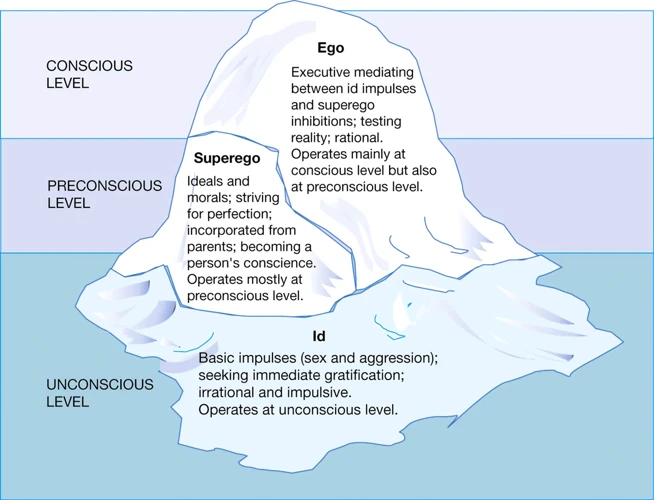
Using Jungian techniques for dream analysis is a powerful tool to explore the depths of our unconscious mind. One technique is to keep a dream journal, recording dreams as soon as we wake up to capture their details and emotions. This helps in identifying recurring themes, symbols, and patterns that appear in our dreams over time. Another technique is amplification, where we delve deeper into the meanings of symbols by exploring their cultural, mythological, and personal associations. For example, if we dream of a jaguar, we can research its symbolism in various cultures and explore its significance to us personally, potentially uncovering insights about our inner strength and power. Active imagination, a technique in which we engage in dialogue with dream symbols or create visual representations of them, can also enhance our understanding. Lastly, dream sharing and analysis with a trained Jungian therapist or through online dream forums can provide additional perspectives and interpretations from others. By embracing these Jungian techniques, we can unlock the hidden messages in our dreams and gain valuable insights into our inner selves.
Connecting Dreams to Your Waking Life
Connecting Dreams to Your Waking Life is a powerful practice that can provide valuable insights and guidance. According to Carl Jung, dreams offer a window into our unconscious mind and can reveal hidden desires, fears, and unresolved emotions. It is through examining the symbols and themes in our dreams that we can begin to make connections to our waking life experiences. By keeping a dream journal and documenting our dreams in detail, we can start identifying patterns, recurring symbols, and themes that emerge. For example, if we consistently dream of being chased, it may indicate a sense of fear or avoidance in our waking life. Exploring the emotions and situations in our dreams can help us uncover unconscious thoughts and feelings that may be influencing our daily experiences. By bridging the gap between our dreams and waking life, we can gain a deeper understanding of ourselves and make positive changes for personal growth and self-discovery. To illustrate, let’s consider a dream where a jaguar appears as a symbol. Understanding the biblical meaning of a jaguar in a dream can help us connect it to our waking life, such as representing power and stealth or drawing attention to our subconscious spiritual connection. Through this process, we can tap into the wisdom of our dreams and use their guidance to navigate our journey in the waking world.
Conclusion
In conclusion, delving into the world of dreams and understanding Carl Jung’s dream symbols can offer profound insights into our subconscious. By exploring common dreams and their interpretations, uncovering symbols in lucid dreams, interpreting nightmares and anxiety dreams, and exploring archetypes, we can gain a deeper understanding of ourselves and our inner workings. Jungian techniques for dream analysis provide valuable tools for deciphering the hidden meanings behind our dreams. Additionally, by connecting our dreams to our waking life, we can uncover patterns and make connections that may guide us towards personal growth and self-discovery. So, embrace the mysteries of your dreams and let them guide you towards a greater understanding of yourself and the world around you. And remember, the next time a jaguar appears in your dream, consider the possible symbolic meanings it holds, such as power, agility, or even a spiritual connection to the divine. For a deeper exploration of the biblical meaning of a jaguar in a dream, click here.
Frequently Asked Questions
What is the significance of dream symbols according to Carl Jung?
According to Carl Jung, dream symbols have great significance as they are a reflection of our unconscious mind. They hold deep meaning and can provide insights into our inner selves and our waking lives.
How do dream symbols differ from person to person?
Dream symbols can differ from person to person based on their individual experiences, beliefs, and cultural background. Jung emphasized that symbols are highly subjective and can have unique meanings for each individual.
Can dream symbols have multiple interpretations?
Absolutely! Dream symbols can have multiple interpretations depending on the context and personal associations of the dreamer. It is essential to consider the emotions and feelings evoked by the symbols, as they can provide valuable insights into their meaning.
What are archetypes in dreams, and how do they relate to symbols?
Archetypes are universal themes or patterns that exist in our collective unconscious. They are often represented as recurring symbols in dreams and hold deep cultural and psychological meaning.
What is the shadow archetype, and how does it manifest in dreams?
The shadow archetype represents the darker, unconscious aspects of ourselves that we often suppress or deny. In dreams, the shadow archetype may appear as menacing figures or situations that reflect our repressed fears, desires, or unresolved issues.
What is the anima/animus archetype in dreams?
The anima/animus archetype represents the feminine and masculine aspects within ourselves, regardless of gender. In dreams, they may manifest as characters or figures who embody qualities that we have not fully integrated into our conscious selves.
Who is the wise old man/woman archetype, and what role do they play in dreams?
The wise old man/woman archetype represents wisdom, guidance, and knowledge. In dreams, they may appear as mentors or spiritual figures who offer insights and messages to the dreamer.
How can lucid dreams help in uncovering dream symbols?
In lucid dreams, the dreamer becomes aware that they are dreaming. This awareness allows them to actively explore and interact with dream symbols, gaining a deeper understanding of their personal significance.
Can nightmares and anxiety dreams have important symbolic meanings?
Yes, nightmares and anxiety dreams can have significant symbolic meanings. They often reflect unresolved fears, anxieties, or underlying emotional issues that need attention and exploration.
How can I use Jungian techniques for dream analysis?
Jungian techniques for dream analysis include keeping a dream journal, reflecting on the emotions and themes of the dream, and exploring personal associations and experiences related to the dream symbols. These practices can help unlock the hidden messages within your dreams and provide valuable insights into your psyche.

